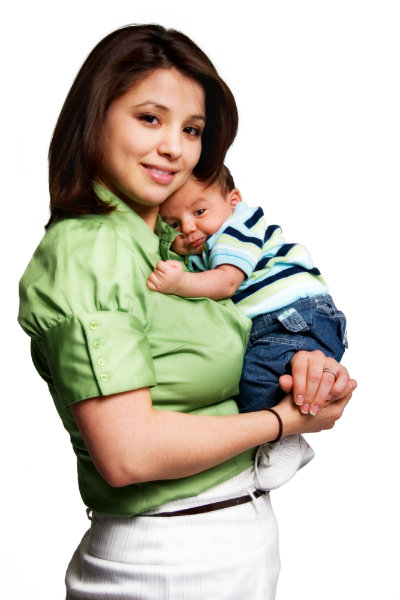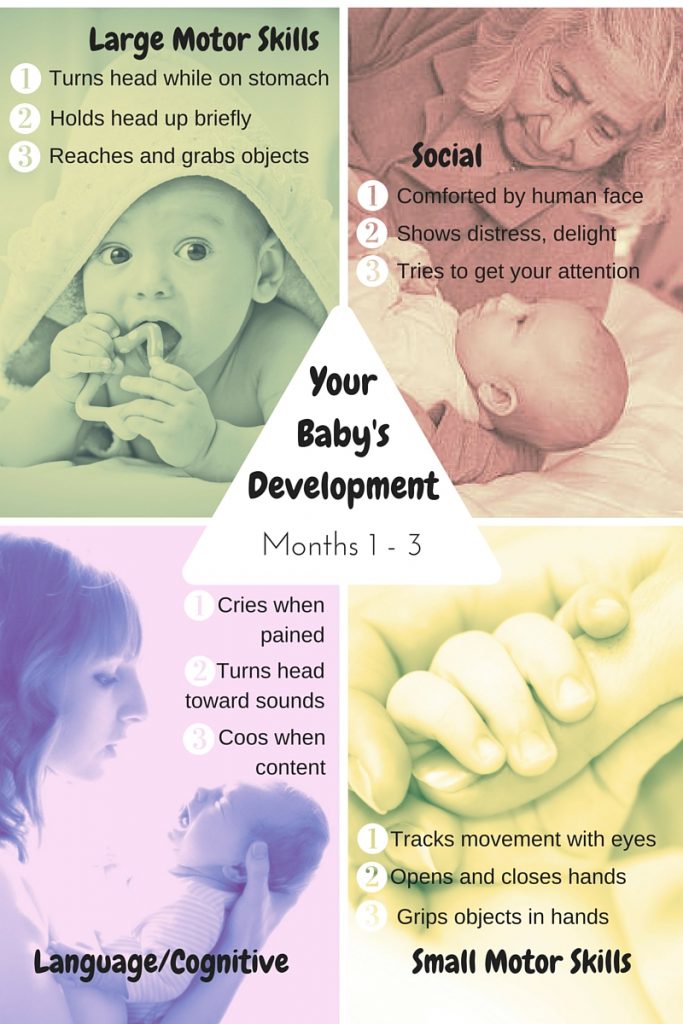 In their first three months, babies seem to change before our very eyes. One day they’re tiny, helpless newborns who sleep most of the time. Suddenly they’re holding their heads up and moving their arms and legs with delight.
In their first three months, babies seem to change before our very eyes. One day they’re tiny, helpless newborns who sleep most of the time. Suddenly they’re holding their heads up and moving their arms and legs with delight.
How can you tell if your baby is developing normally? We know you’re busy (and maybe a little sleep-deprived?) so we’ve made you a quick summary of some key developmental milestones. Below those, you’ll find some helpful resources to answer further questions you may have.
Keep in mind that some babies might be “ahead” in one area, and “behind” in another. That’s perfectly normal, pediatricians tell us.
“Don’t look at the time as much as the progression, and see that your child is changing and growing. It’s not a race. Nobody’s going to ask on a college application when your child first walked or said ‘da-da.’”
-Jennifer Shu, MD, pediatrician and co-author of Heading Home with Your Newborn.[1]
Four Areas of Growth
Your baby develops in four general areas:
- Social (interacting with people)
- Language/Cognitive (communicating and thinking)
- Large Motor Skills (moving the parts of his body)
- Small Motor Skills (making subtle motions, like grasping objects).
Let’s look at some of the ways babies develop across these areas from birth to three months:
How You Can Encourage Your Baby’s Development
To help your baby as he changes, you can:
- Enjoy your baby: pay him lots of attention, learn his signals (“I’m hungry” or “Too much noise”), cuddle with him
- Give him plenty of outdoor time, and time with people who enjoy him
- Give him lots of eye contact as you sing, talk, and read to him
- Give him tummy time: let him play on his tummy (while you supervise) and practice using his muscles
When to Be Concerned
If you think your child may not be developing normally, we advise you to check with your pediatrician. You can read this article to find out some of the red flags that signal potential problems. Be sure to express your concerns to your doctor at your next visit.
Don’t Miss It!
Your baby will grow up faster than you can imagine. So love your baby, just as he is right now.
——-
Watch for future articles on developmental milestones for
4-6 months, 7-12 months, and 1 year to 18 months.
Did you know you can access free videos and talk one-on-one with our staff
about your child’s development at Choices Pregnancy Center?
Ask us about our Earn While You Learn program today
and find out what makes your baby tick!
For additional information, explore these resources:
Videos of babies’ development – choose a month to watch: http://helpmegrowmn.org/HMG/DevelopMilestone/Newborn/index.html
From the American Pregnancy Association: http://americanpregnancy.org/first-year-of-life/first-year-development/
Parenting pointers for the first three months: http://www.parents.com/baby/development/growth/1-3-month-milestones/
Play activities for this stage of development: https://www.healthyfamiliesbc.ca/home/articles/babies-physical-development-0-6-months
__________
[1] http://www.webmd.com/parenting/baby/infant-development-9/stages-of-development?page=2

